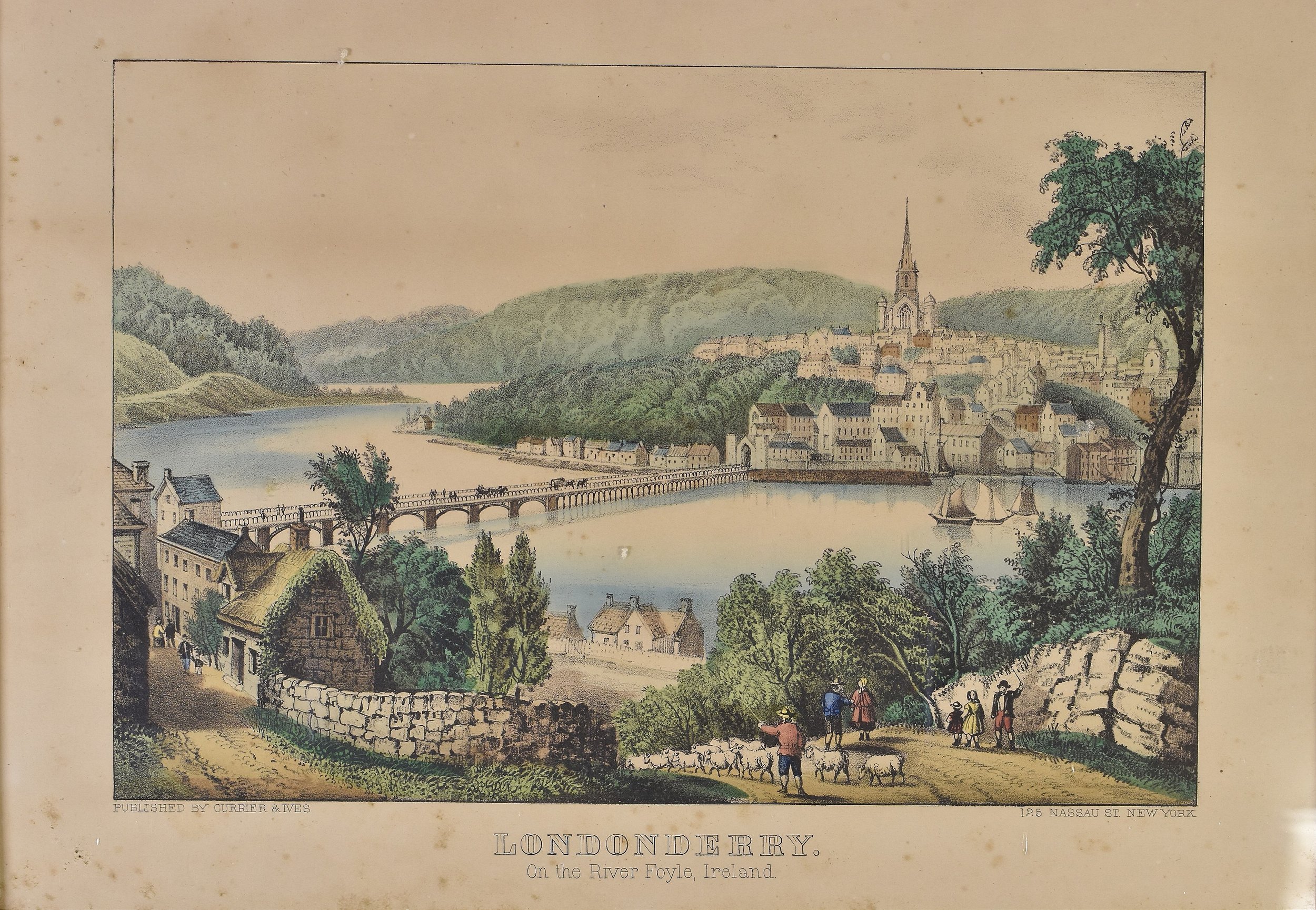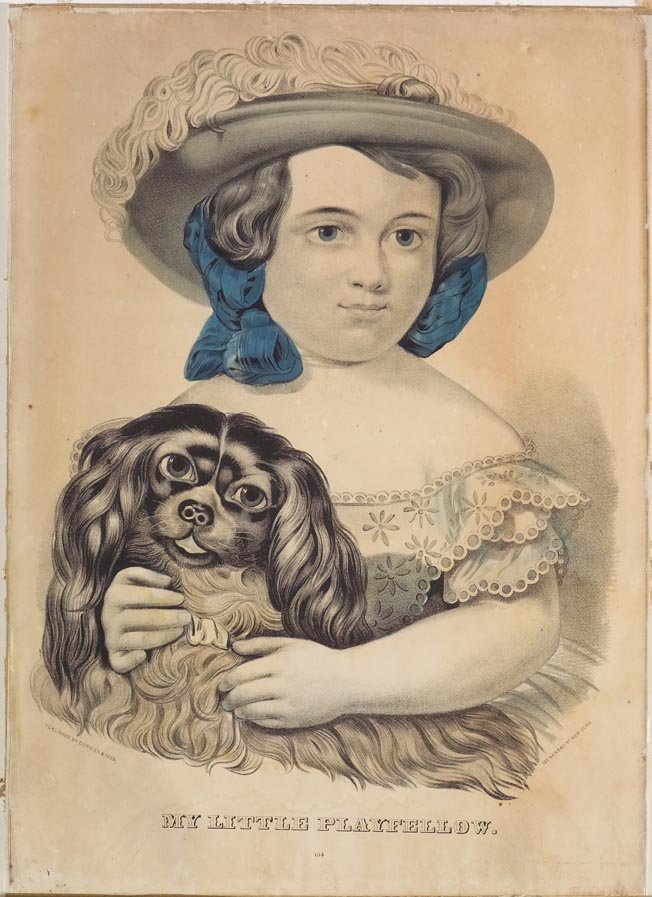Ink and Stone: Lithography at the KLMA
Lithography is a printing process invented in the late 18th century by a Bovarian playwright, Alois Senenfelder, that would ultimately revolutionize printed media in Europe and North America.
Derived from the greek word from Stone, Lithos, and Mark, Graph, the process consists of drawing the initial reference image onto a stone or metal slab with a greasy crayon. After wetting the slab, ink will stick to the greasy material and allow the image to be transferred onto a sheet of paper or parchment once it is firmly pressed onto the reference surface. The greasy material can withstand multiple pressings, allowing one image to be produced multiple times for low cost. In a time prior to widespread photography, lithography prints provided the masses with copies of contemporary landscapes or biblical scenes for no more than a few cents.
“Londonderry”, Currier & Ives
[KLMA 1994.8.8]
“Noah’s Ark”, Currier & Ives
[KLMA 1994.8.6]
The KLMA houses a small collection of American lithography prints. Lithography made its way to America in the 1820s. Due to the ease of manufacturing and demand for print media, a flourishing publishing industry emerged. The epicenter of this industry was in Hartford, Connecticut. The American printing industry tailored its product to convey the life and times of Victorian America. The images on these prints give us numerous details about how people dressed, spoke, and the idealized expectations they held for themselves.
‘Robert Burns and his Highland Mary’, Currier & Ives
[KLMA 1975.887.1]
The demand for lithographs entering the 1830s was high, and competition among the firms was fierce. A stark difference to the often sweet and serene images they created.
‘Our Pets - Fast Asleep’, Currier & Ives
[KLMA 2003.180.1]
‘Our Pets - Wide Awake’, Currier & Ives
[KLMA 1989.1.66]
Firms would often poach popular images from one another. The attempts to hide the forgeries would range from cunning to downright brazen. Evidence of these tense relationships are realized in the form of suspiciously similar images from competing firms.
‘My Little Playfellow’, Kellogg & Co.
[KLMA 2003.187.1]
‘My Little Playfellow’, Currier & Ives
[Springfield Museum 2004.D03.719]
‘The Young Housekeepers - The Day After Marriage’, Currier & Ives
[KLMA 1989.1.67]
Images often depicted domestic bliss, a romanticized version of life that the masses should aspire to reach. As seen in “The Young Housekeepers - The Day After Marriage'' A young couple embrace at the window of their new home, surrounded by lush fabric and flowers in full bloom. This would signal a wish of opulence in their future, or perhaps even hint at a fruitful family life.
Children and young women were common subjects of prints, as Victorian society would often hold their youthfulness and innocence in the highest virtue. It could also be suggested that this was an attempt to appeal to the highest demographic of lithographic collectors, women and young girls. No matter the reason, these designs proved successful, and would often run for several series.
‘The Cousins’, Currier & Ives
[KLMA 2003.177.1]
‘Wait For Me!’, Currier & Ives
[KLMA 2003.181.1]
‘Little Daisy’, Currier & Ives
[KLMA 2003.176.1]
‘My Choice’, Currier & Ives
[KLMA 2003.182.1]
As photography grew in popularity throughout the nineteenth century as the dominant media for depicting imagery, the lithography industry would collapse from the decreased demand. Few firms would manage to pivot into a new, industrial and commercial print industry, but the majority simply had to shut their doors.
The prints remain as fun collectables, and as windows into the past. The memories of a once thriving industry are hidden within the images on the page, their stories mixed into the ink.
Visit the KLMA to view more of our lithograph collection.
Text by Elaine Jones












